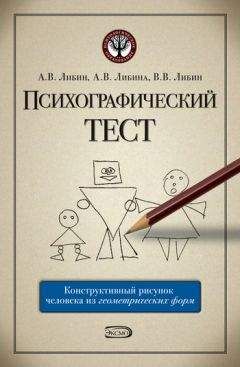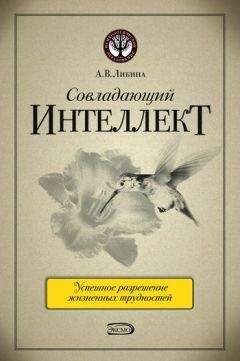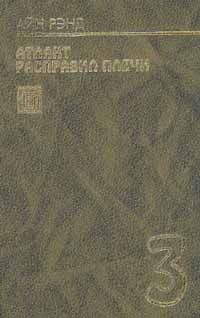Tardieu, L. (1872). Etude medico-legale sur las folie. Paris: Bailliere. Torrey. J. (1989). Breaking the Code of Doodles. Omni, April; 11, 7. Sciences Module, 64.
Wartegg, R. (1939). RefLexological Profile. New York. Werner, H. (1948). Comparative psychology of mental development. Chicago: Follet.
Wundt, W. (1900/1921). Volkerpsychologie: Eine Untersuchung der Entwicklungsgesetze von Sprache, Mythus und Sitte, First Volume, Fourth Edition, First Part, Chapter 2, Stuttgart: Alfred Kroner Verlag.
Yama, M. F. (1990). The usefulness of human figure drawings as an index of overall adjustment. Journal of Personality Assessment, 54, 78–86.
GEOMETRIC HUMAN FIGURE DRAWING TEST™ (TIGER™)
Constructive projective test named Geometric Human Figure Drawing Test™ (Test of Geometrical Forms Preference™; TiGeR™, Libin et al., 1986–2006) is the first original Russian standardized projective technique. The test's main task is to consecutively draw three human figures, limiting the number of preferred elements to 10 in each drawing, a forth geometric picture of a human figure using person-defined numbers of elements, and a fifth geometric drawing of a human face, again following the instruction to use only 10 elements in total. Combining constructive drawings of human figure with individual preference of three basic geometrical forms, TiGeR™ brings together qualitative (projective) and quantitative (statistical) approaches based on the use of drawings in clinical diagnosis and therapy, monitoring of medical recovery and rehabilitation, developmental studies, and neuropsychological and personality assessments. This unique diagnostic system expands the usefulness of the projective drawing technique by providing standardized assessment of cognitive functioning, emotional mood, and personality states resulting from psychosocial situations. TiGeR™ is widely used since 1986 among thousands of clinicallyand personality-oriented practitioners to monitor cognitive deterioration and emotional disturbance in clinical populations with mental health problems (e.g., in schizophrenia, bipolar disorders, Alzheimer's, and patients with chronic depression and anxiety), and persons with physical disabilities (e.g., spinal cord injury, traumatic brain injury, stroke, Parkinson's disease,), and chronic illness (e.g., cardiovascular malfunction and cancer). TiGeR™ can also be used to analyze individual expressive styles in children and adults in the general population.
TiGeR™ was tested on various clinical and healthy populations of differing age and gender, professional and socio-economic groups, and cultural status. Interpretation of the TiGeR™ parameters is a result of experimental and applied research involving analysis of more than 30,000 geometrical-human-flgure-drawings obtained from more than 5,000 male and female children and adults aged from 4 to 97 years. The results of psychometric internal and external validity based on nomothetic, aggregate methodology, are well integrated in a unified assessment framework together with in-depth examination of clinical cases analyzed via ideographic methodology. More than 200 drawing syndromes are defined through psychomotor, emotional, cognitive and behavioral signs. Each sign is referenced to its original source thus mapping out relevant neuropsychological or social factors.
As an express-diagnostic method, TiGeR™ drawings are highly sensitive to occurrence of emotional changes triggered by internal, psychophysiological states, or external events such as difficult family or other interpersonal situations, posttraumatic symptoms or presence of psychopathology in its early development. As a therapeutic method, geometric constructive drawings reduce tension associated with any testing situations, and psychosocial or medical intervention. The complete test takes only 10 to 20 minutes to perform which also makes it very useful as the icebreaking technique during clinical sessions or a tune-in procedure during administration of a lengthy battery of assessments.
TiGeR™ Instruction
Drawing 1. Draw a human figure using only following geometrical shapes: triangles, squares, and circles:
You have to use 10 elements in total. Each of the geometrical shapes has to be used in your drawing at least once. You can change the size of the geometrical shapes as you wish. After completion of the first drawing, please, write below your drawing the following information: (1) full name, (2) age, (3) gender, and (4) date of the study.
Now proceed to the Drawing 2.
Drawing 2. Draw a new picture of the human figure using the same geometrical shapes triangles, circles and squares using 10 elements in total, and without looking at the previous drawing or trying to recollect it. You have to use each geometrical shape at least once. You can change the size of the geometrical shapes as you wish.Please, proceed to the next drawing.
Drawing 3. Draw a new picture of the human figure using the same geometrical shapes using 10 elements in total, and without looking at the previous drawing. Please, proceed to the next drawing.
Drawing 4. Draw a new picture of the human figure using the same geometrical shapes – triangles, circles and squares. You may use as many elements for your fourth drawing as you wish. You have to use each geometrical shape at least once. You can change the size of the geometrical shapes as you wish. Please, proceed to the next drawing.
Drawing 5. This time draw only a human face using the same geometrical shapes – triangles, circles and squares. You have to use 10 elements in total.
You have to use each geometrical shape at least once. You can change the size of the geometrical shapes as you wish. Thank you.
Unique features of the Geometric Human Figures Drawing Test™ (TiGeR™)
The uniqueness of the TiGeR™ test task, procedure, and interpretation is based upon following design principles:
First of all, a constructive drawing of the human figure is based on the use of basic geometrical forms: a triangle, a circle and a square;
Secondly, the instruction incorporates the elements of the structured (e.g., limiting the drawing to 10 elements) and un-stractured (e.g., testee-defined number of elements) technique;
Thirdly, the interpretation is based on the interplay of three major approaches:
1. Projective analysis of unconscious individual preferences in the quantity of geometrical forms used to construct a
drawing;
2. Interpretation of a constructive Gestalt formed by the combination of the used geometrical forms (e.g., the Gestalt of 5-3-2: 5 triangles, 3 circles, and 2 squares characterizes different individual reality than 1-1-8:1 triangle, 1 circle, and 8 squares);
3. Idiographic analysis of the drawing elements, for instance, presence or absence of the essential body parts, distortion of elements, the size of the figure, and the use of the accessories.
Exploring TiGeR™ Validity and Reliability. TiGeR™ parameters from more than 3,000 drawings were compared with demographic, psychophysiology and psychosocial data. The analysis included such measures as various drawing tests, MMPI, 16-PF, EPI, Luscher test of color preferences, indicators of nervous system properties, temperamental characteristics, cognitive and emotional styles, and Coping Intelligence™ assessments (C/Q™,Libin, E., 2003, 2008). TiGeR™ constructive validity was studied by means of calculating an interclass correlation matrix. Among studied parameters were also 36 drawing subtypes based on TiGeR™ formulas, and eight meta-types that integrate 36 subtypes into a higher level taxonomy. The reliability was measured using the test-retest procedure with the following intervals: 3, 6, and 12 month. For some individual cases the reliability was measured over a 10 years period using the same standardized instruction. The analysis was performed using the Spearman paired associative measure, as well as rank correlation. Results showed high reliability of overall index of preferred geometrical forms, the geometric Gestalt (formula), and some picture elements (e.g., presence of an empty space in the human figure, presence of eyes, extended legs, square head).
Case Study: TiGeR ™ and Draw-A-Tree Test comparison analysis. A state of anxiety in geometric-human-figure-drawing, made by 43-year old Garry, is graphically represented by a triangular hat on a person's head (a symbol of a «load on one's head», and a feeling of being very confused «like a fool»). At the same time, in Garry's picture of a tree his inner anxiety surfaced in his numerous drawing strokes. A tree trunk and branches are also shaded by the edgy lines providing a channel of expressing anxiety through this graphic style.
The edges of the foliage in the tree test are shaped nervously, as so the leaves were roughly chopped. The feeling of anxiety projected in the tree drawing by edgy lines correlates with the image of a triangular hat in the geometric drawing and an image of crying" eyes (eyes in the shape of down-pointed triangles), that also indicate emotional disappointment and helplessness. The social edginess and tension that characterize Garry's relations with others (sharp edges of triangular hands of human figure), nevertheless are being suppressed as evident by the graphical representation (sharp edges of triangular hands are directed inward). A standardized psychometric test also confirmed Garry's high score on general anxiety and suppression as an employed defensive mechanism.
TiGeR™ Applicability. Test has a wide spectrum of applicability for interdisciplinary research and rehabilitation, and clinical and psychological practice. Generously illustrated and well-organized, the TiGeR™ scoring and interpretation manual makes it easy to analyze human-figure-fromgeometrical-forms drawings for immediate use in clinical practice, as well as to score the results for further statistical research. The Manual is intended for clinicians as well as researchers working with children, adults, and elderly of various educational and cultural backgrounds (e.g., non-English speaking groups).
Идея разработки теста ТиГр как комплексной диагностической системы принадлежит Либину Виктору Владимировичу (Либин В.В., Либин А.В., Либин Вл. Вик., 1986).
Определения, сформулированные другими авторами, сопровождаются указанием фамилии. В некоторых случаях после определения указывается порядковый номер главы, в котором данное понятие рассматривается более подробно.





